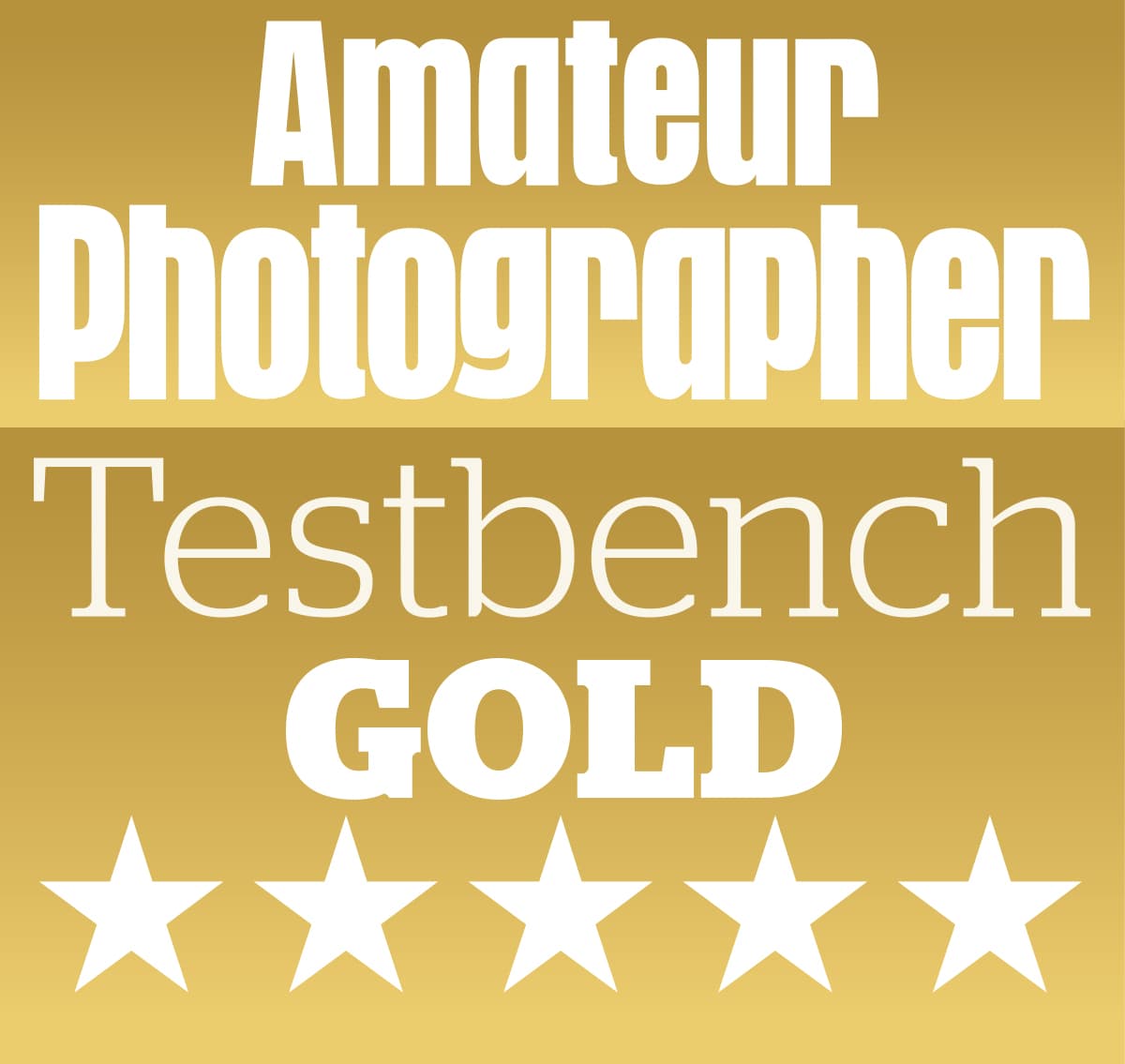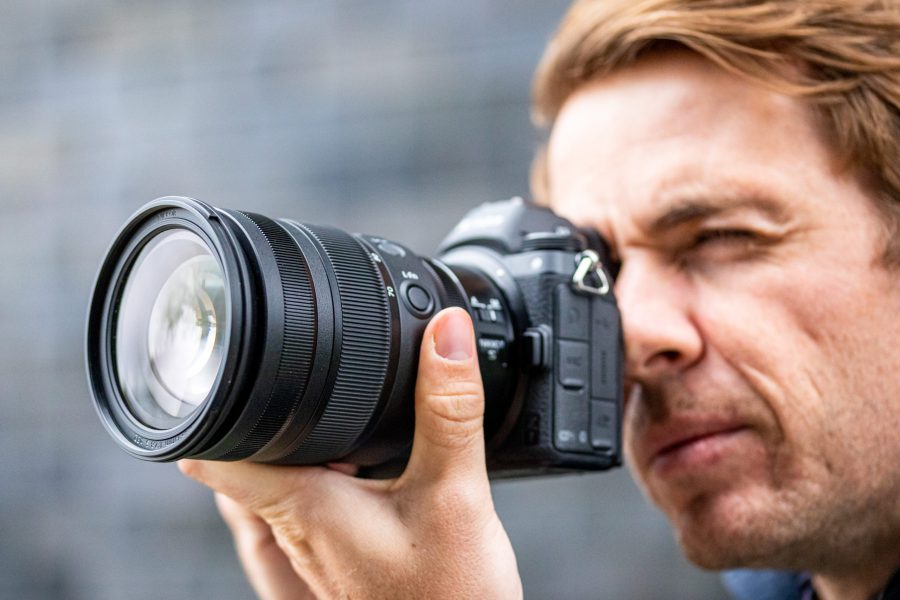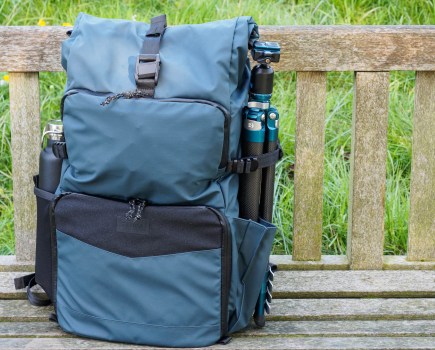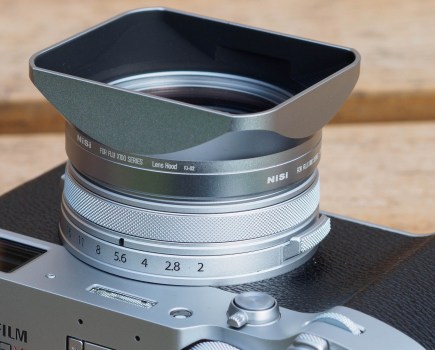Nikkor Z 24-70mm f/2.8 S review: Introduction
When a manufacturer announces a new lens mount – just as Nikon did last year with the Z-mount – we immediately start guessing what lenses might follow. Nikon, however, wasn’t shy about letting us know about what they had planned in the future. The lens roadmap that was released at the same time as the Nikon Z 7 and Nikon Z 6 told us six lenses would join the Z 24-70mm f/4 S, Z 35mm f/1.8 S and Z 50mm f/1.8 S during 2019. The latest to arrive on our test bench is the Z 24-70mm f/2.8 S.
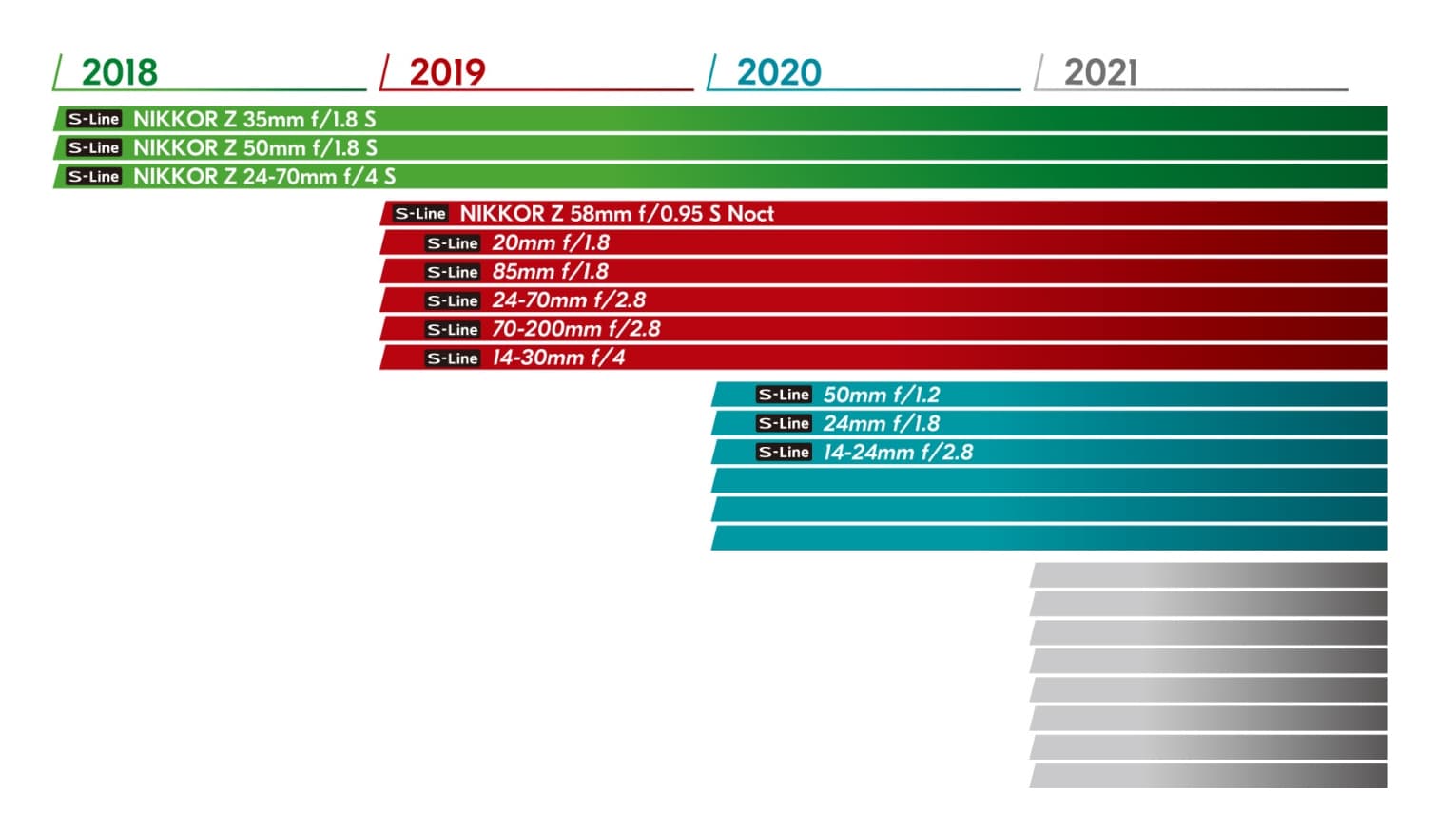
Nikon’s three-year lens roadmap. A pro-spec 70-200mm f/2.8 is expected to arrive imminently
Before we cast our eyes over the fastest standard zoom in the Z-series to date, we should mention that many more Z lenses are due to arrive. If recent rumours are to be believed, we can expect the reported Z 20mm f/1.8 S, Z 50mm f/1.2 S and Z 14-24mm f/2.8 S to be joined by a Z 135mm f/1.8 S, Z 85mm f/1.2 S, Z 28-70mm f/2.8-3.5 S and Z 24-120mm f/4 S next year.
A further seven lenses are expected in 2021. Allegedly these will include a Z 105mm f/1.8 S, Z 28mm f/1.8 S, Z 65mm f/1.8 S, Z 35mm f/1.2 S, Z 28-280mm f/2.8-5.6 S, Z 100-300mm f/4 S as well as another that is still unknown. If all of the above are made, 22 lenses will be available for the Z-series by the end of 2021.
Nikkor Z 24-70mm f/2.8 S review: Features
The lens we’re looking at is the second standard zoom Nikon has made for its Z-series cameras. While there are a number of differences between it and the Z 24-70mm f/4 S, not least the fact it’s £1120 more expensive, the maximum aperture is most significant. With a maximum aperture of f/2.8 across the zoom range it’s a stop faster and as you’d expect from a lens with a pro-spec status, it employs advanced optics and extensive weather sealing.

The lens balances extremely well with Nikon Z-series cameras like the Z 7 it was tested with.
The optical construction of the lens is made up of 17 elements in 15 groups – a more complex arrangement than the 14 elements in 11 groups as found inside the Z 24-70mm f/4 S. Two ED (extra-low dispersion) elements are included, as are four aspherical elements. While Nikon’s Nano Crystal coatings suppress ghosting and flare coming from backlight at diagonal angles, an all-new multi-layer ARNEO coating is also applied to compensate for light entering the lens from vertical angles. Nikon says it helps maximise contrast and sharpness when the light source is visible in the frame.
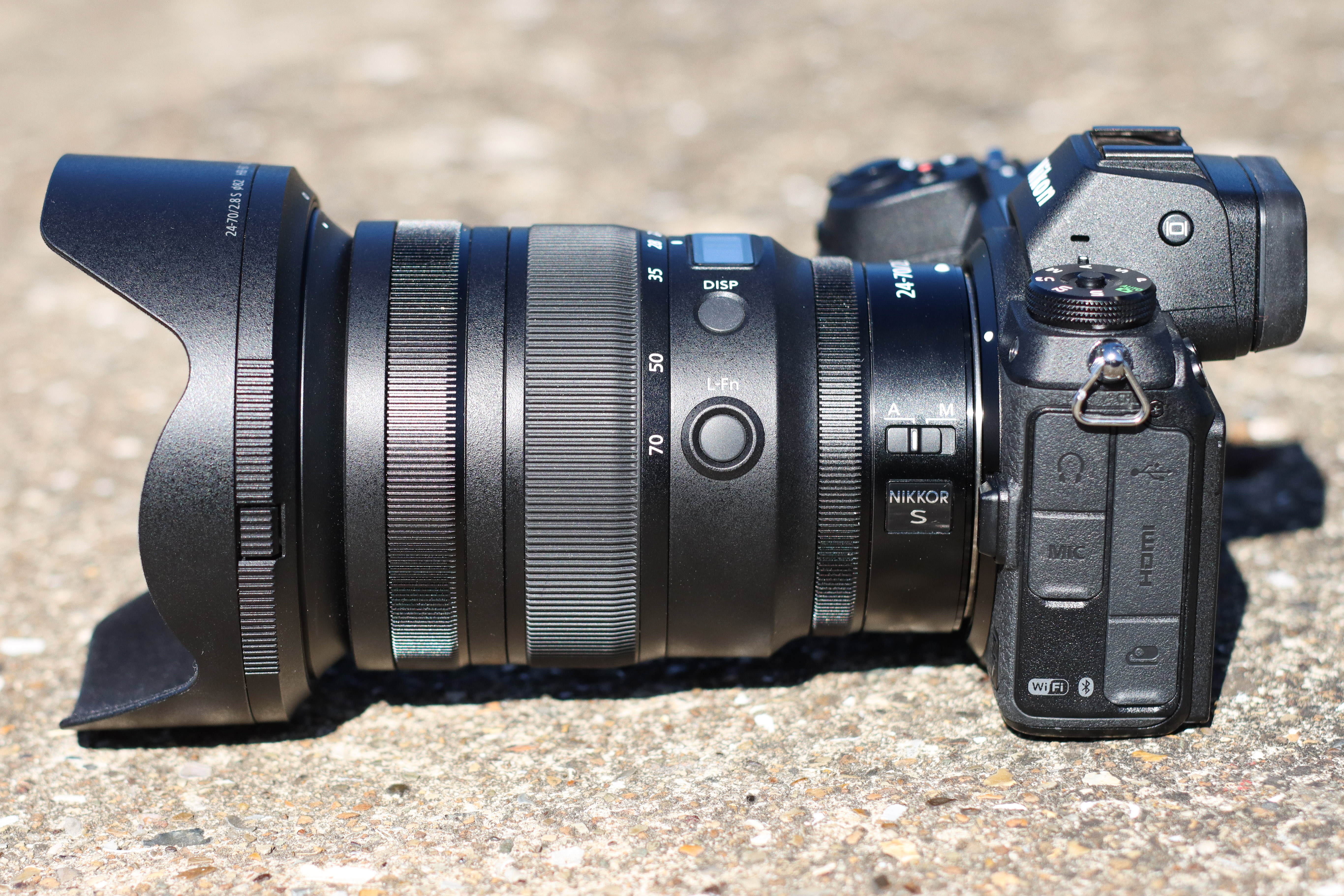
The lens is larger than the Nikkor Z 24-70mm f/4 s and is 305g heavier.
To help ensure fast, accurate and silent autofocus, a powerful stepping motor (STM) combines with Nikon’s Multi-Focus System. This system uses two actuators to move two focus groups at once, enabling the lens to achieve critical focus rapidly, even at close focusing distances. On the subject of close focusing, the lens has a minimum focus distance of 0.38m (1.25ft) at all positions throughout the zoom range. With the internal type of focusing system there’s no fret of front element rotating when using screw-in filters or those that attach via an adaptor ring and holder, but it’s worth noting the 82mm thread size is larger than the 72mm and 77mm threads on the Z 24-70mm f/4 S and F-mount Nikkor AF-S 24-70mm f/2.8 E ED VR.
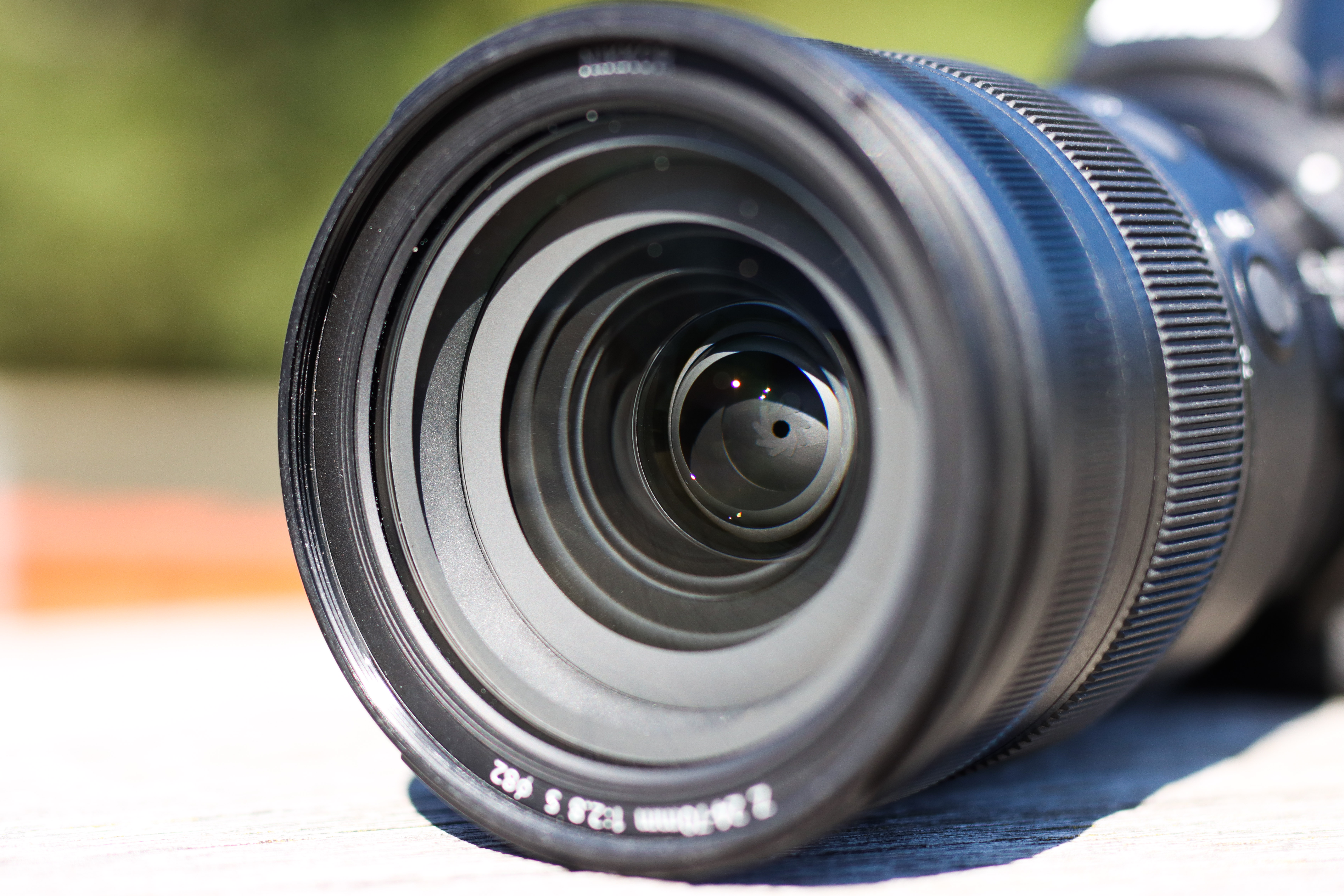
A close up view of the front element. Look closely and you can make out the nine aperture blades.
Unlike Nikon’s popular Nikkor AF-S 24-70mm f/2.8 E ED VR, optical image stabilisation isn’t built-in to the lens. This contributes to it being 265g lighter and 28.5mm shorter in length at its widest focal length setting. To stabilize handheld images, users will want to take advantage of the 5-axis in-body image stabilisation built into Nikon’s Z 7/Z 6 cameras, allowing you to shoot up to five stops slower than otherwise possible.
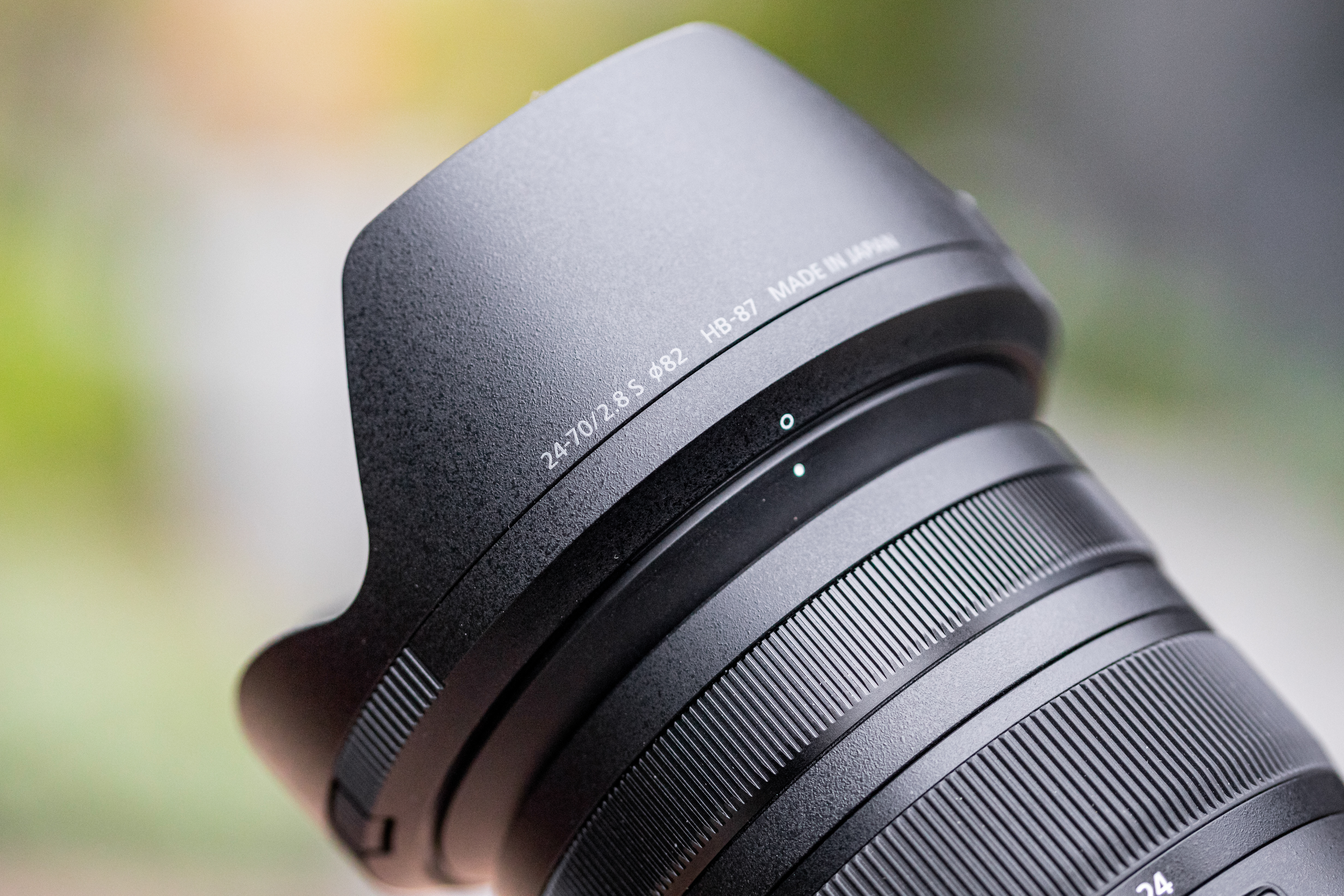
The adoption of a felt lining helps reduce light reflection inside the hood
In the box you get all the usual accessories, including lens caps for front and back as well as a CL-C2 lens case. The plastic HB-87 lens hood that’s lined with felt on the inside locks with a 90-degree turn and needs a release button to be pressed before it can be removed.
Nikkor Z 24-70mm f/2.8 S review: Build & Handling
The lens is 25% lighter and 18% shorter than the Nikkor AF-S 24-70mm f/2.8 E ED VR in Nikon’s F-mount lens lineup. Whereas the slower Z 24-70mm f/4 S has a retractable design this lens doesn’t, meaning the zoom ring doesn’t need to be twisted to extend it to 24mm before it can be used.
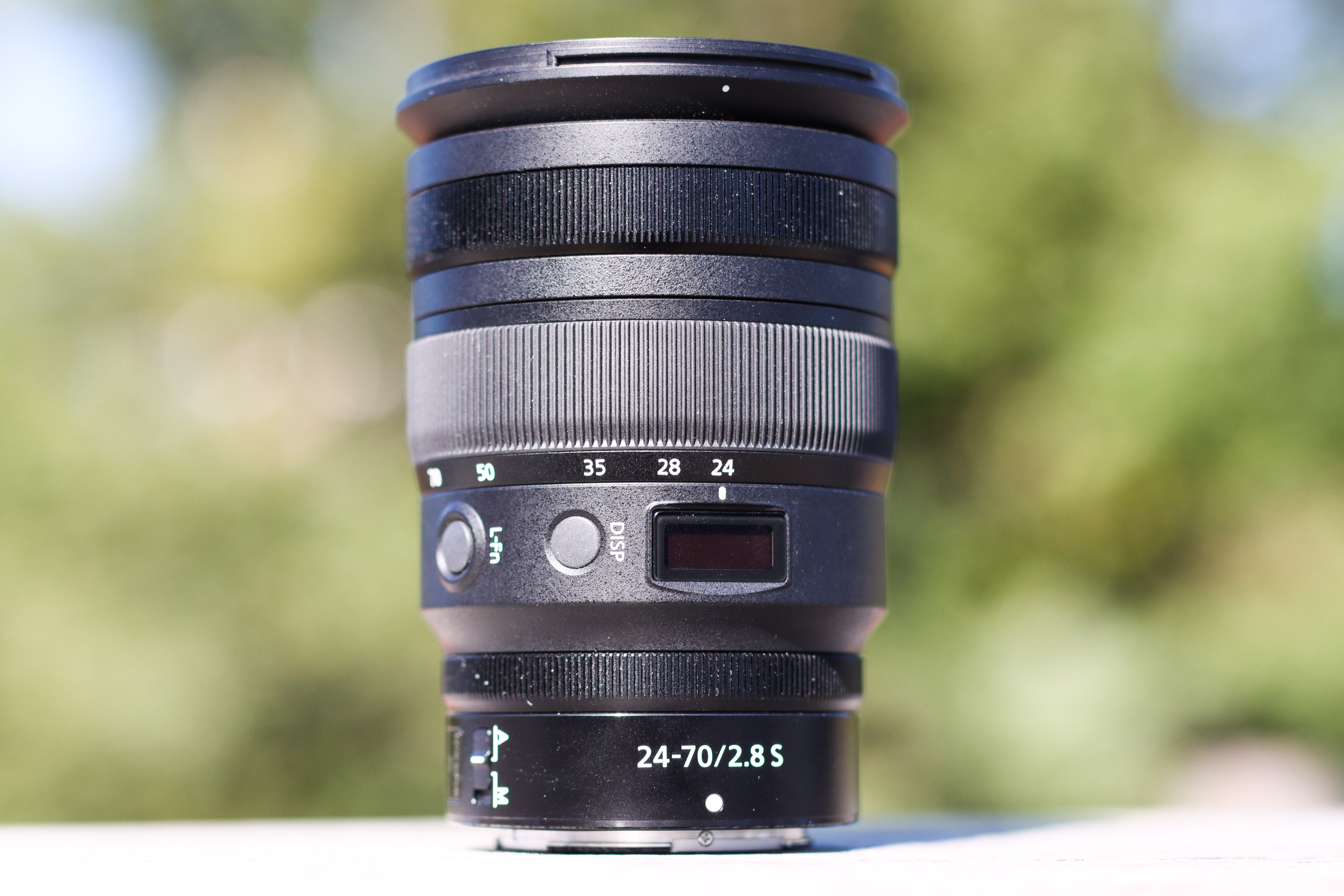
The zoom ring is rubberised. The control ring and manual focus ring are finely grooved but are not rubberised.
One feature that has been well received on some of Nikon’s new Z-mount lenses is the addition of a control ring. On Nikon S-Line lenses like the Z 24-70mm f/4 S that features one, it’s possible to change the function of the control ring from its default setting of adjusting focus to control aperture or exposure compensation. The barrel on the lens we’re looking at is longer and features functionality unique to higher-class models in the Nikkor S-Line. In addition to a control ring, an independent focus ring is positioned ahead of the zoom ring. The beauty of this arrangement is that you can adjust the focus and control exposure compensation or the aperture without having to revert to the custom control assignment options in the camera’s menu to switch between them.
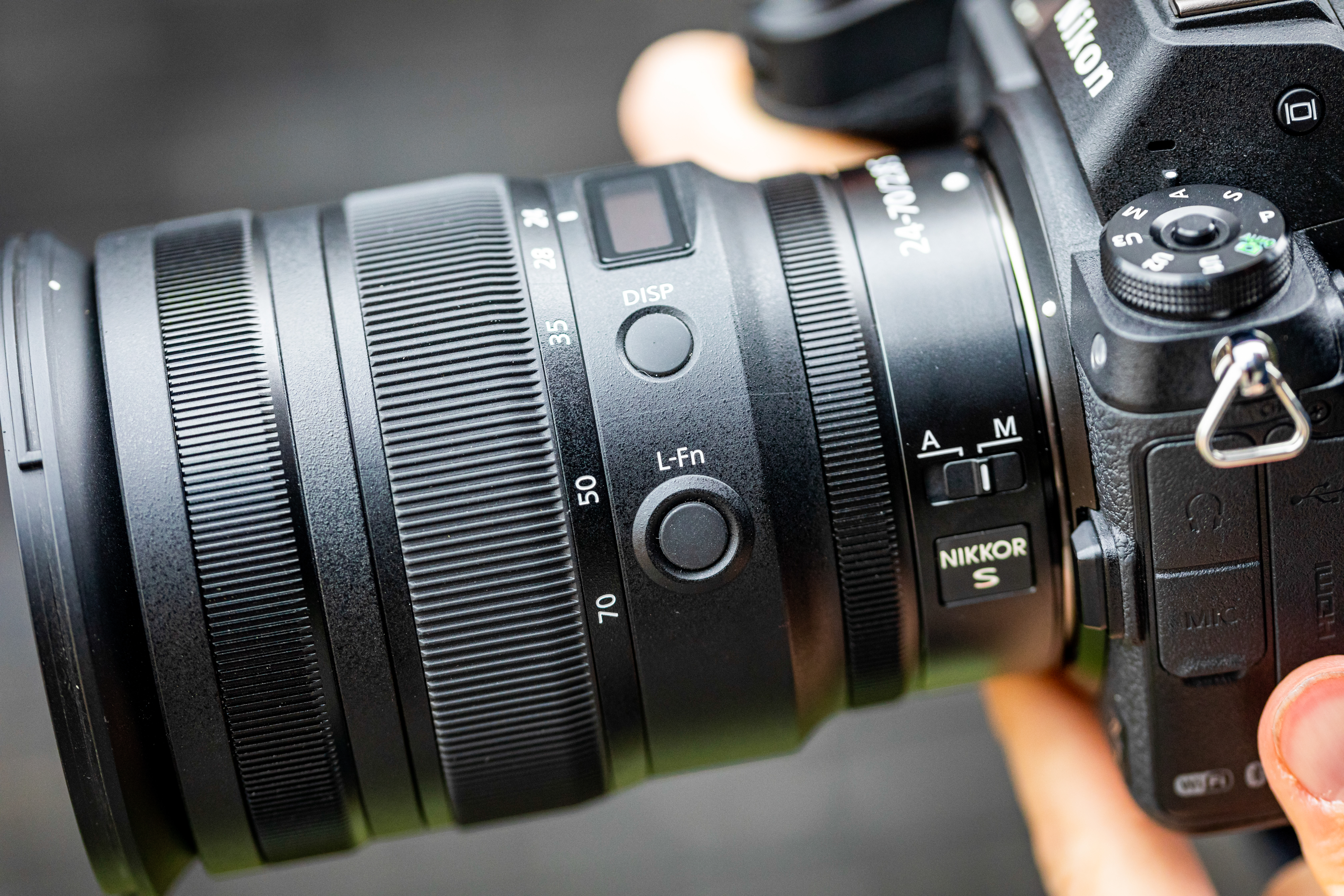
The L-Fn button on the barrel is well positioned. I opted to operate it with my thumb when the lens was being supported in my left hand.
Between the control ring and the zoom ring there’s also a L-Fn button that allows a number of functions to be assigned to it, and a DISP button that’s used to toggle through focal length, aperture and focus distance on the display panel beside it. As illuminated panels on lenses go, it displays its information brightly and clearly. It’s useful for glancing down at and can be used as a way of precisely setting your focal length. It displays its information in 0.5mm increments between 24mm and 35mm and 1mm increments thereafter. The information panel is only active when the camera is powered and turns itself off after 10 seconds of no lens-based activity.
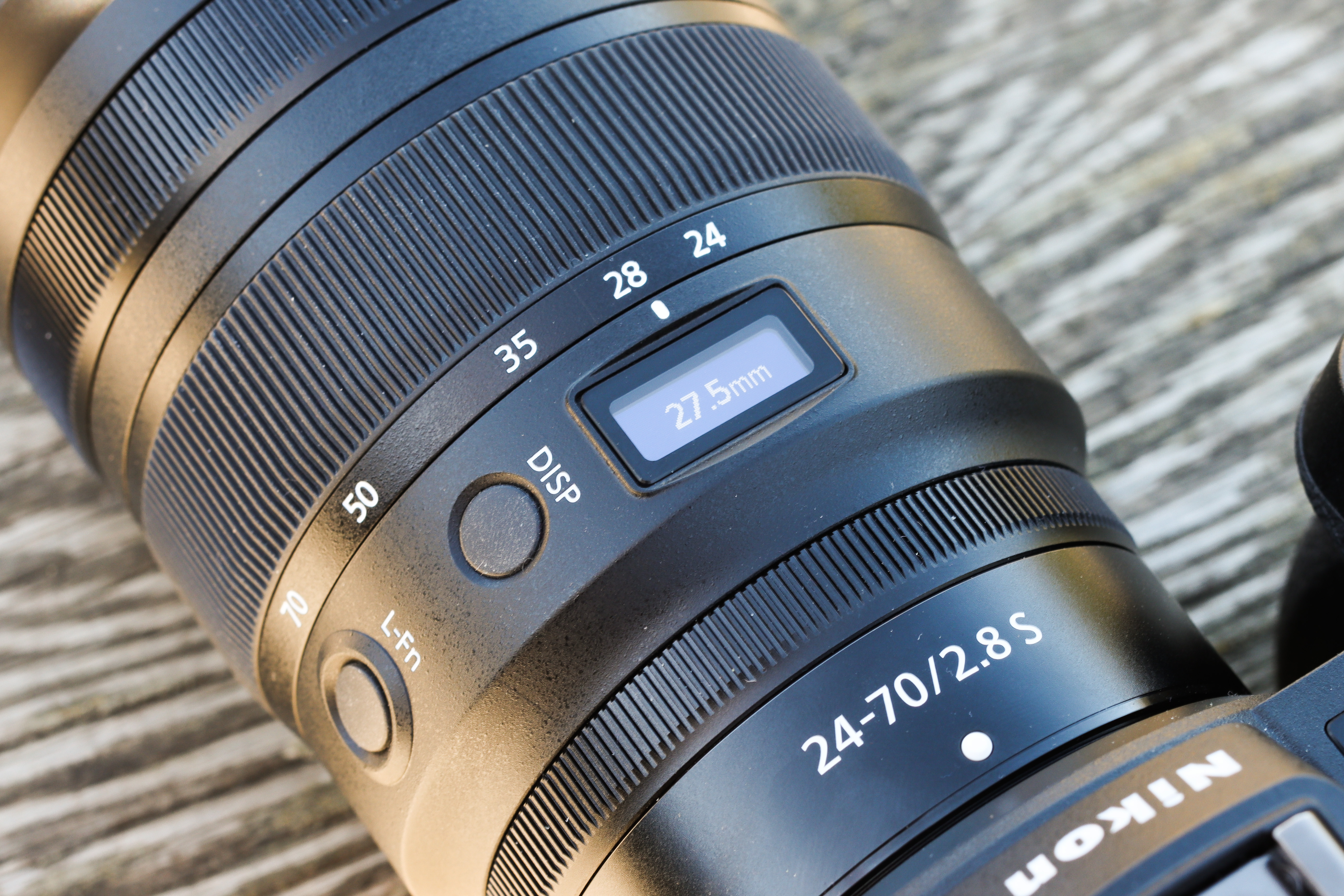
The information panel displays the precise focal length the zoom is set to. It can also display the aperture and focus distance.
The build and finish is deserving of the serious enthusiast and professional photographers it’s designed for. Engraved focal length markings stand out clearly in white against the matte black barrel and the AF/MF focus switch is easy to find with your thumb from behind the camera without having to go looking for it. The control ring and manual focus ring both rotate silently with satisfying fluidness, while the rubberised zoom ring offers a lovely smooth motion through the zoom range. The zoom operates across a quarter turn of the zoom ring and there’s sufficient resistance to ensure that zoom creep isn’t an issue when it’s pointed down.
Nikkor Z 24-70mm f/2.8 S review: Autofocus
The multi-focusing system that’s adopted as the AF drive system works very well. It goes about its business of focusing in an accurate and spritely fashion, locking onto near and far subjects with apparent ease. Having the option to control AF-ON as well as a whole host of AF/AE lock options from the Fn button on the barrel of the lens is a boon and couldn’t be easier to setup – simply head to the custom setting menu in the camera, select controls and you’ll find everything you need to customise it from the custom control assignment option.

The AF/MF switch is positioned between the lens mount and control ring just as it is on the Nikkor Z 24-70mm f/4 S lens.
When you hold the lens to your ear you can make out faint whirring from the stepping motor as it focuses, but its of such low frequency it can’t be traced in the audio that’s recorded by the in-built microphone.
Nikkor Z 24-70mm f/2.8 S review: Image Quality
To find out how well the lens performs; we coupled it up to Nikon’s 45.7-million-pixel Z 7. Like other camera manufacturers, Nikon has taken the direction of embedding its lens correction profiles for its Z lenses into the cameras raw files, which are applied automatically by the software you use at the processing stage.

Nikon Z 7 & Nikkor Z 24-70mm f/2.8 S, 1/500sec at f/2.8, ISO 100 (44mm) Model: Poppy Haskell
Loading raw files into Adobe Camera Raw and opening the lens corrections tab reveals a message signalling the built-in lens profile for correcting distortion, chromatic aberration and vignetting has been used. There is a way of disabling this automated behaviour, albeit not in the software itself, but there’s no practical advantage of doing so unless you have a desire to compare results with and without the embedded profile applied.
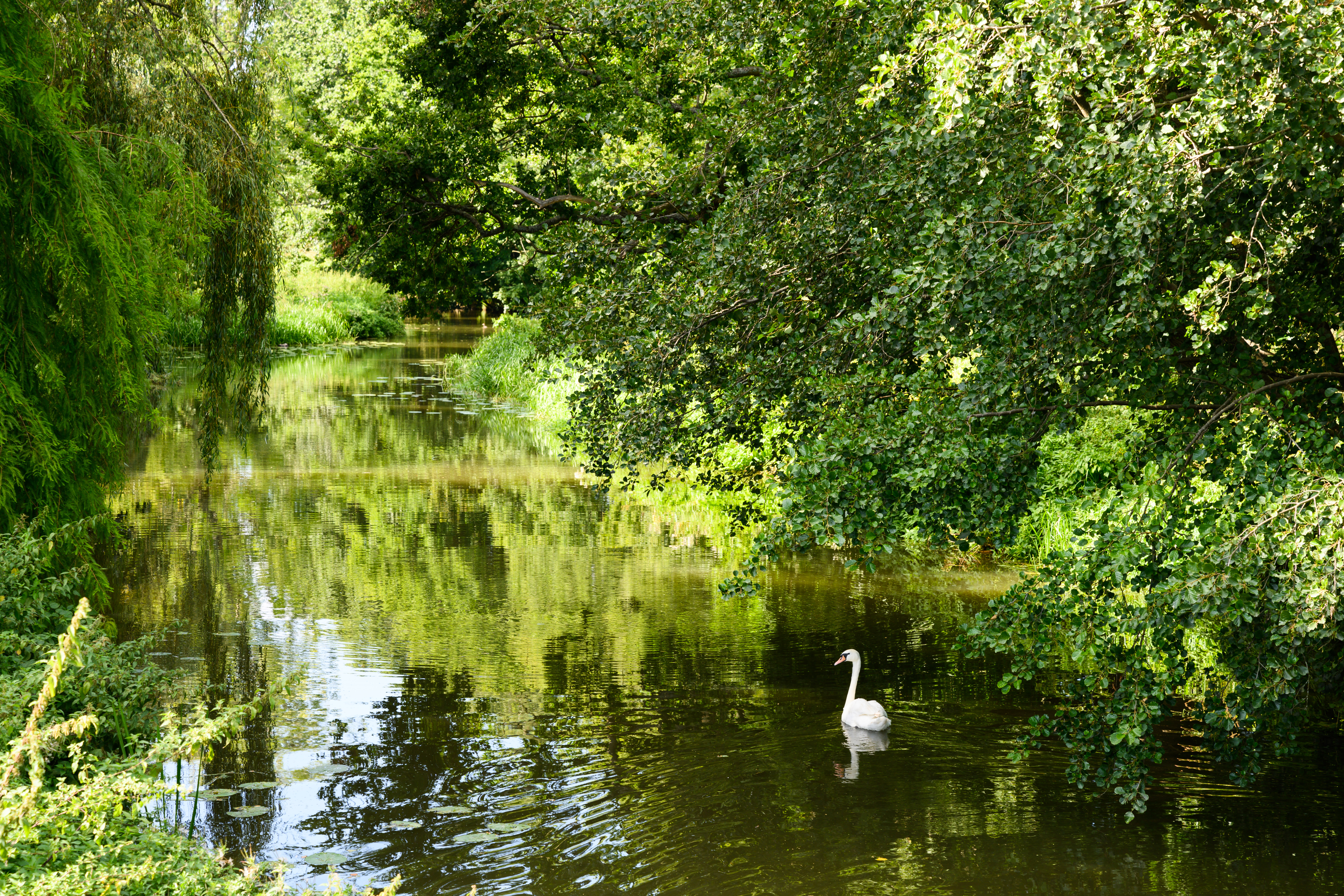
Nikon Z 7 & Nikkor Z 24-70mm f/2.8 S, 1/125sec at f/5.6, ISO 100 (70mm)
Running a series of real-world tests against the Nikkor 24-70mm f/4 S before looking at these closely on our computer highlighted that the lens we’re looking at is optically superior, both in terms of the sharpness it resolves across the frame and the gorgeous blur it creates behind subjects at wide apertures. This doesn’t take the shine off the Nikkor 24-70mm f/4 S though, which remains a fantastic lens that has size, weight and cost advantages of its own.

Nikon Z 7 & Nikkor Z 24-70mm f/2.8 S, 1/4000sec at f/2.8, ISO 100 (70mm) Model: Poppy Haskell
The lens delivers its sharpest results at the wide end of the zoom, with centre sharpness figures at 24mm peaking above those taken at 50mm and 70mm lengths. Corner sharpness improves at all focal lengths by closing the aperture down to around f/5.6 and seriously impressive sharpness are obtained right across the zoom range at f/8. If you’d like to resolve the sharpest images possible and your shooting situation doesn’t insist that you shoot at f/2.8, it’s advisable stopping down to at least f/4 when shooting between 50mm and 70mm.

Nikon Z 7 & Nikkor Z 24-70mm f/2.8 S, 1/125sec at f/2.8, ISO 100 (70mm)
With the embedded lens correction profile taking care of curvilinear distortion, no work is required to fix barrel or pincushion distortion. It’s much the same story with regard to chromatic aberrations. These are well corrected for throughout, with no nasty surprises or obvious fringes of colour along high contrast edges.

Nikon Z 7 & Nikkor Z 24-70mm f/2.8 S, 1/4000sec at f/2.8, ISO 400 (24mm) Model: Poppy Haskell
Just as I discovered when I tested the Nikon Z 14-30mm f/4 S earlier in the year, the embedded lens correction profile alleviates corner shading at wide apertures, but doesn’t remove it completely. Vignetting is most obvious when the lens is used at 24mm with an aperture of f/2.8. Taking manual control of the vignetting amount slider in Adobe Camera Raw and setting it to a value of +30 removed it effectively as illustrated in the above image.
Nikkor Z 24-70mm f/2.8 S review: Resolution, shading and curvilinear distortion
Resolution
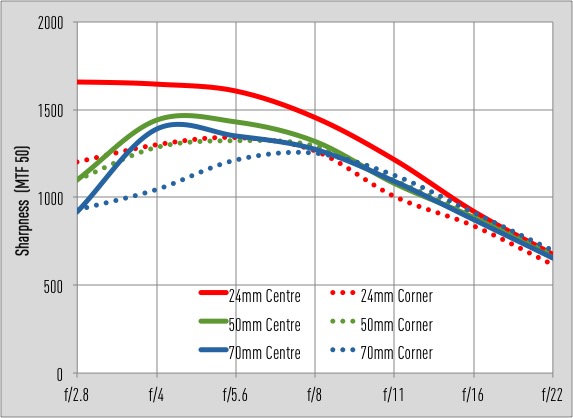
Nikkor Z 24-70mm f/2.8 S on Nikon Z 7
The Nikkor Z 24-70mm f/2.8 S delivers some of the best results we’ve ever recorded from a standard zoom. The red line indicates that it puts in a fine performance at the wide end of the zoom range, with corner sharpness improving as the aperture is closed down to f/4 and f/5.6. Though it is sharper in the centre and at edge at 50mm than it is at 70mm, excellent centre and corner sharpness is upheld throughout the zoom range between f/5.6 and f/8. The influence of diffraction sees sharpness drop off quite clearly beyond f//11. For the very best results from edge-to-edge users will find themselves using the lens between f/5.6 and f/8.
Shading
Use the lens at f/2.8 and you will notice that the corners of images appear darker than the centre of the frame, even with the embedded lens correction profile automatically applied to raw files. Vignetting occurs at all focal lengths when the aperture is set wide open, but is most obvious at the 24mm position. Stopping the lens down a stop or two from f/2.8 to f/4 or f/5.6 helps alleviate the fall-off of light towards the edge.
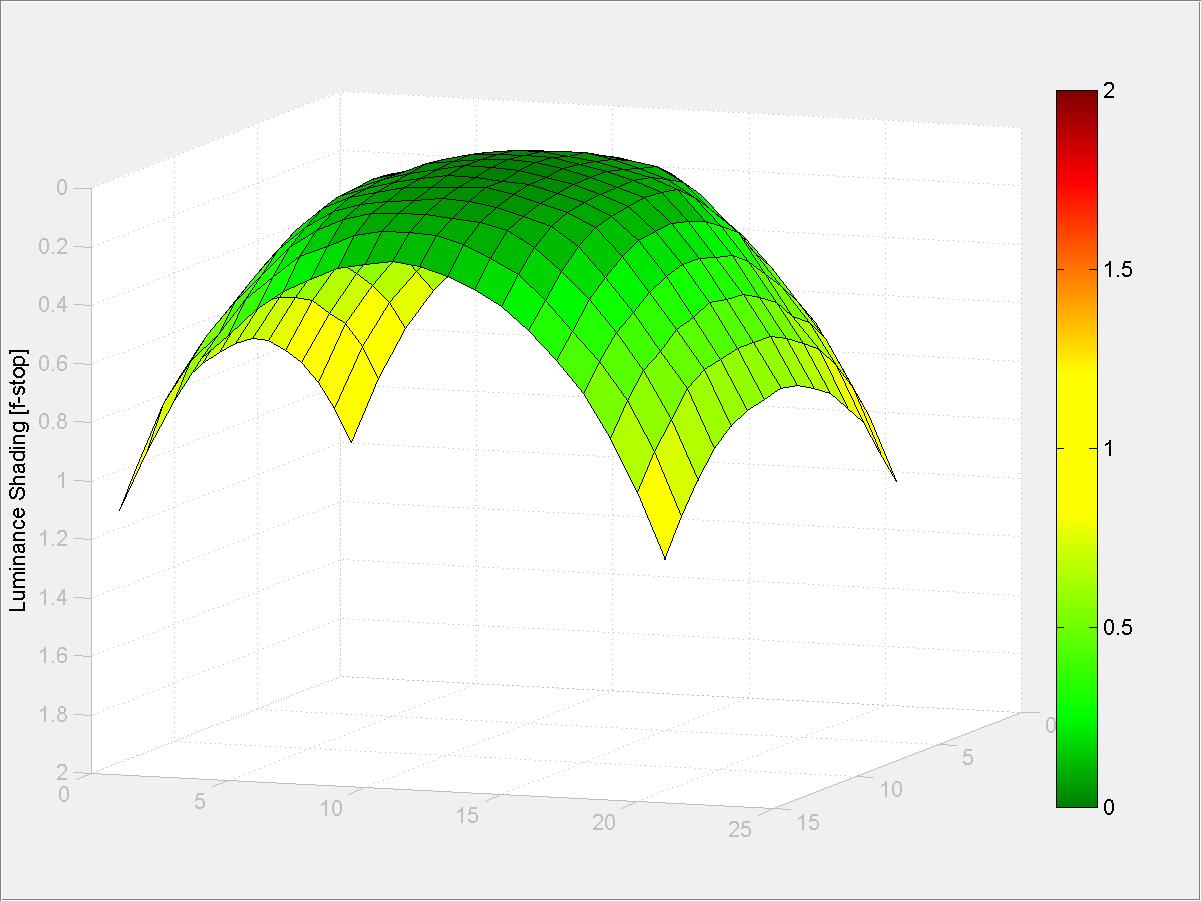
Nikkor Z 24-70mm f/2.8 S, 24mm @ f/2.8
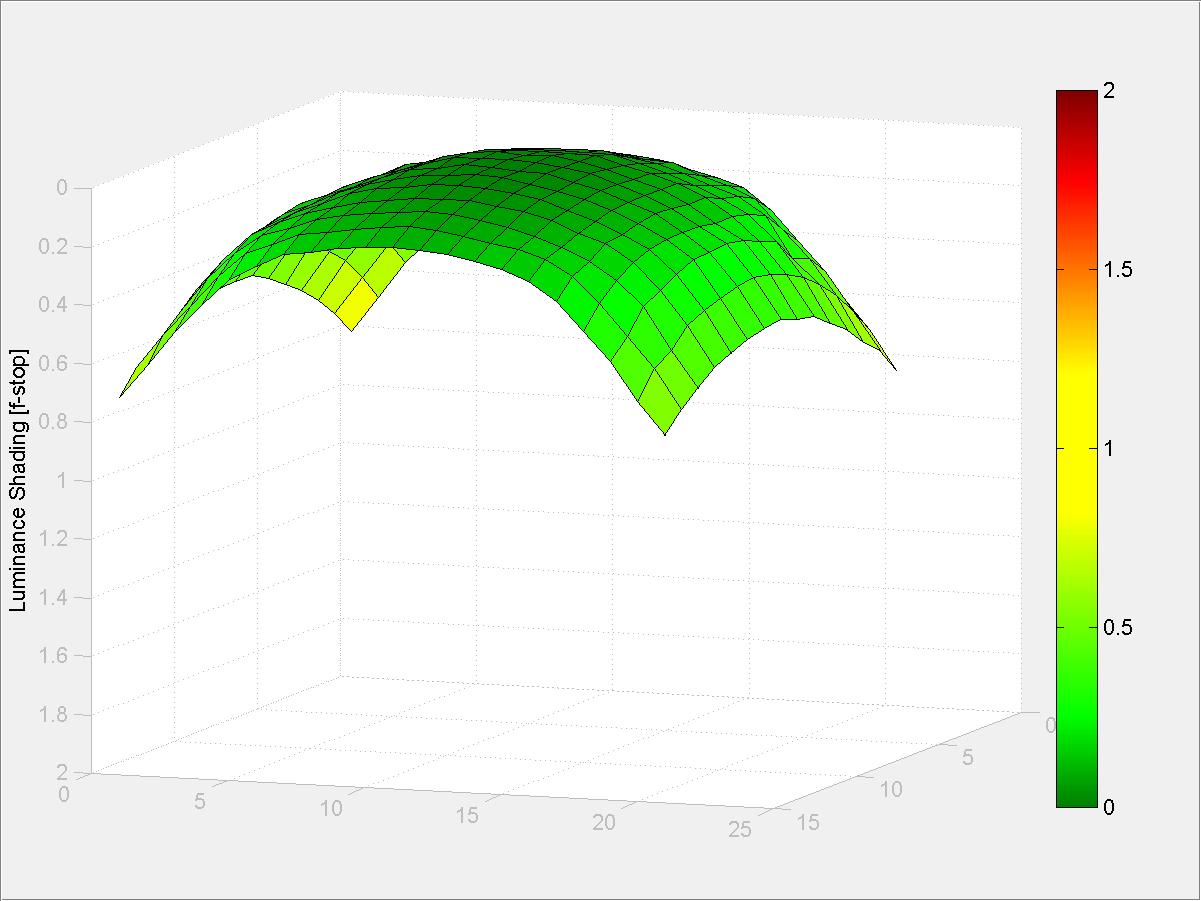
Nikkor Z 24-70mm f/2.8 S, 24mm @ f/4
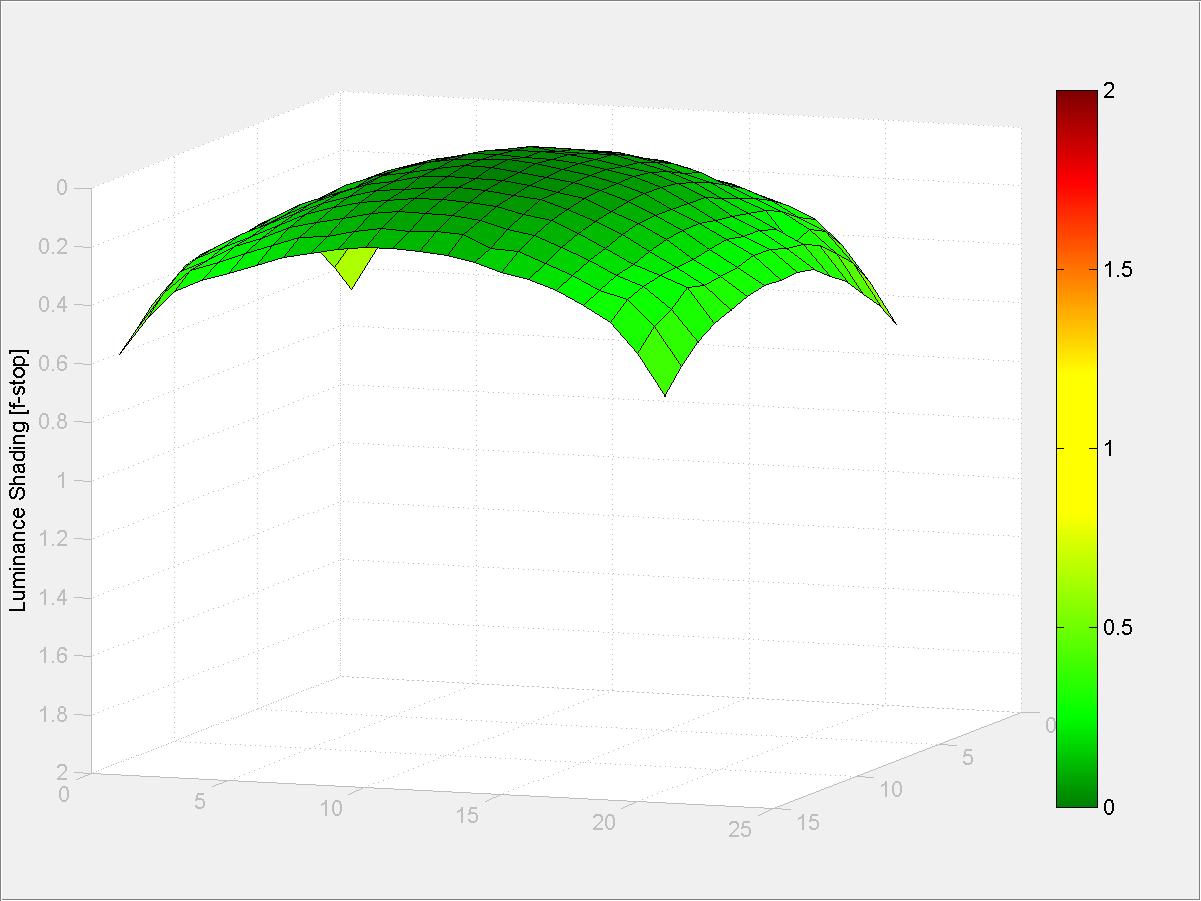
Nikkor Z 24-70mm f/2.8 S, 24mm @ f/5.6
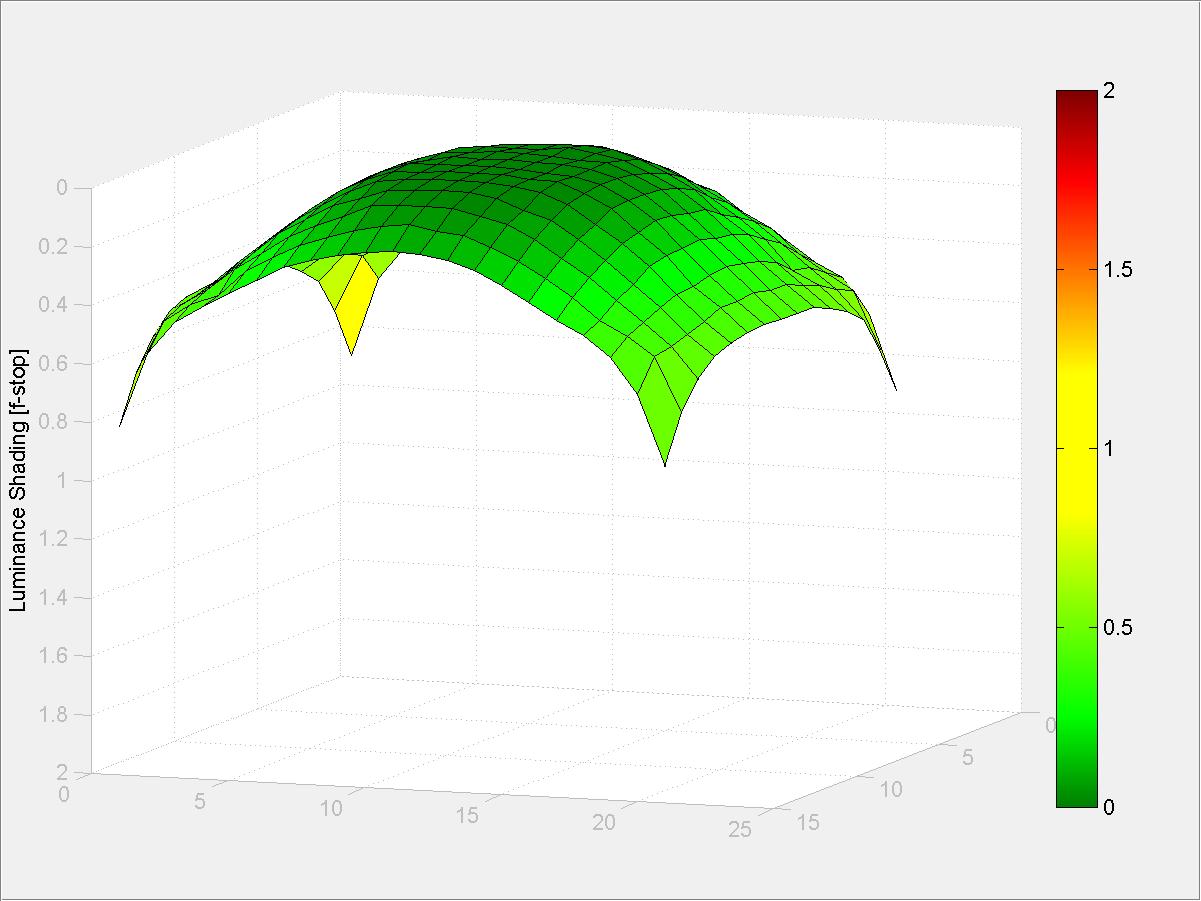
Nikkor Z 24-70mm f/2.8 S, 50mm @ f/2.8
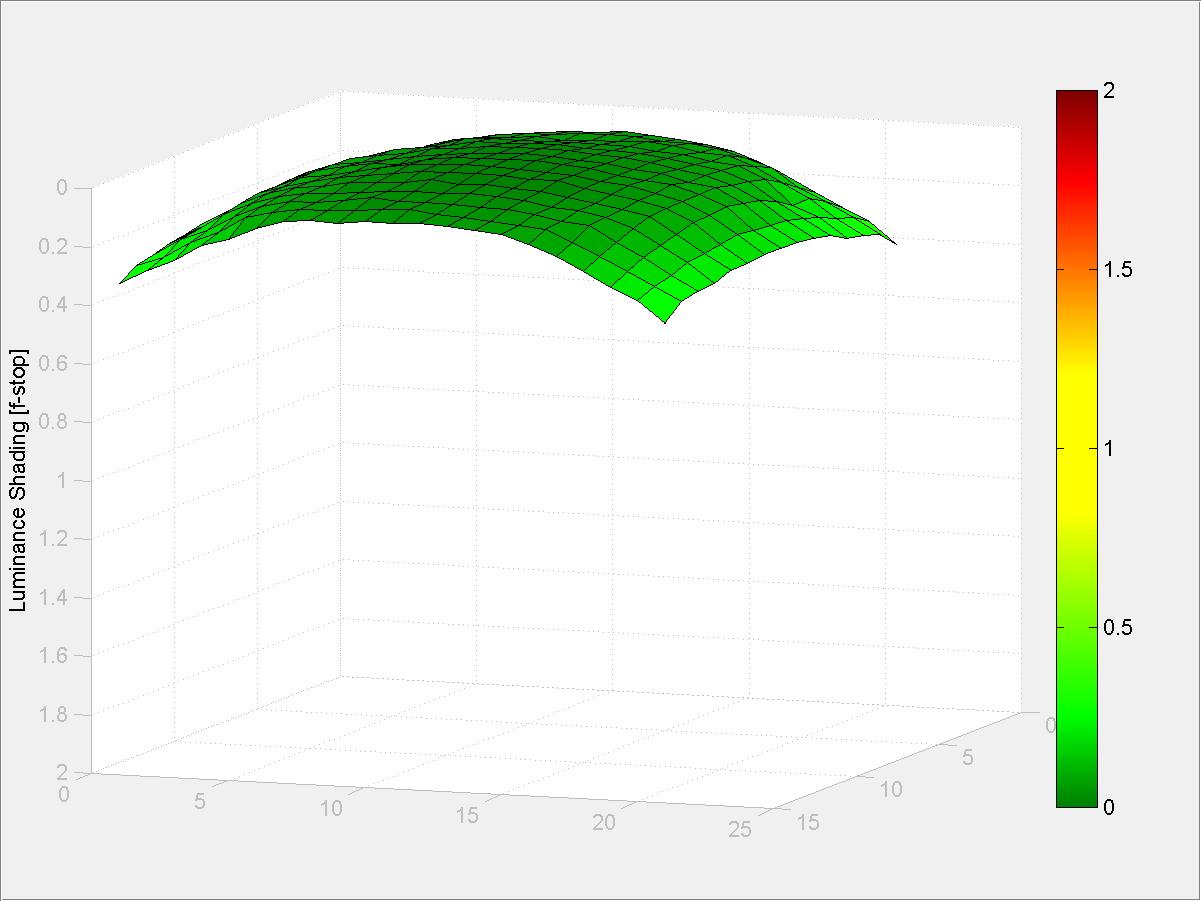
Nikkor Z 24-70mm f/2.8 S, 50mm @ f/4
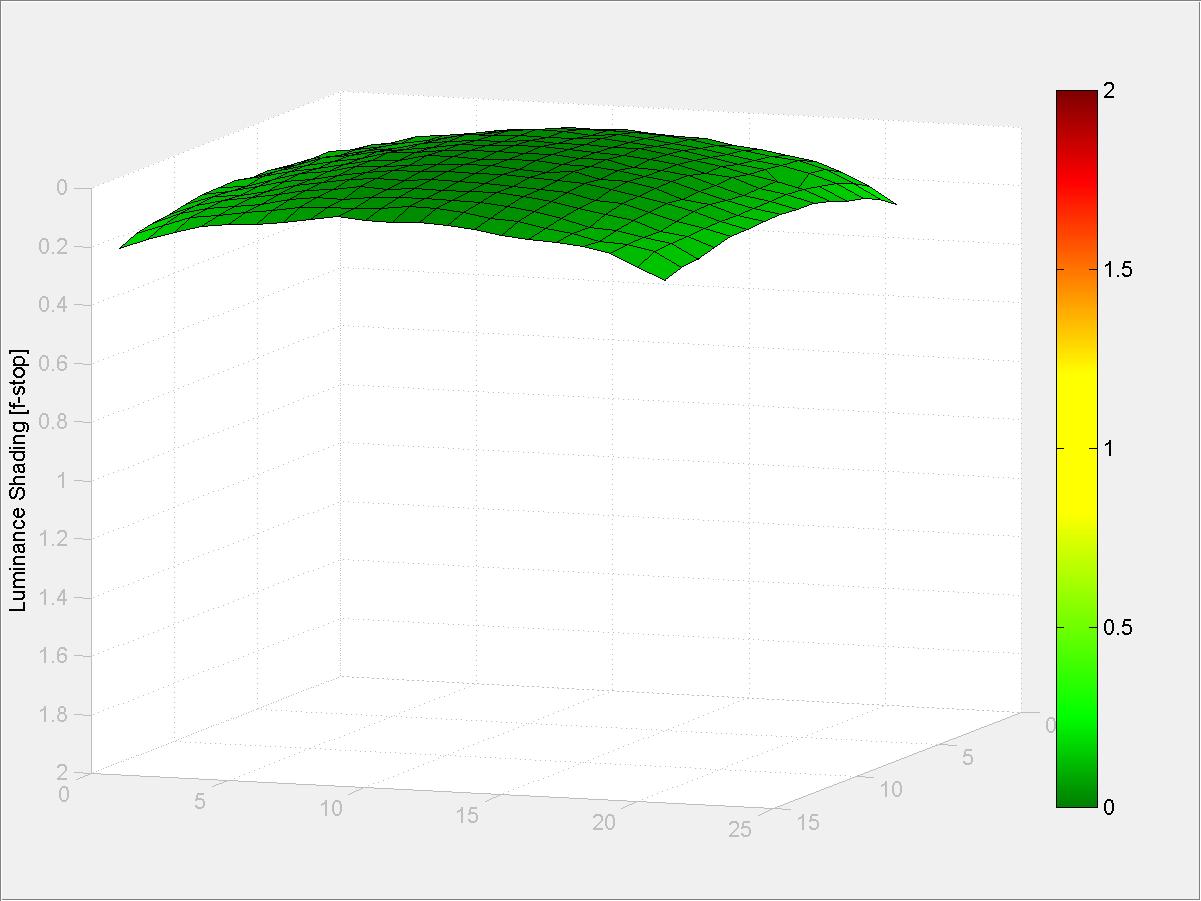
Nikkor Z 24-70mm f/2.8 S, 50mm @ f/5.6
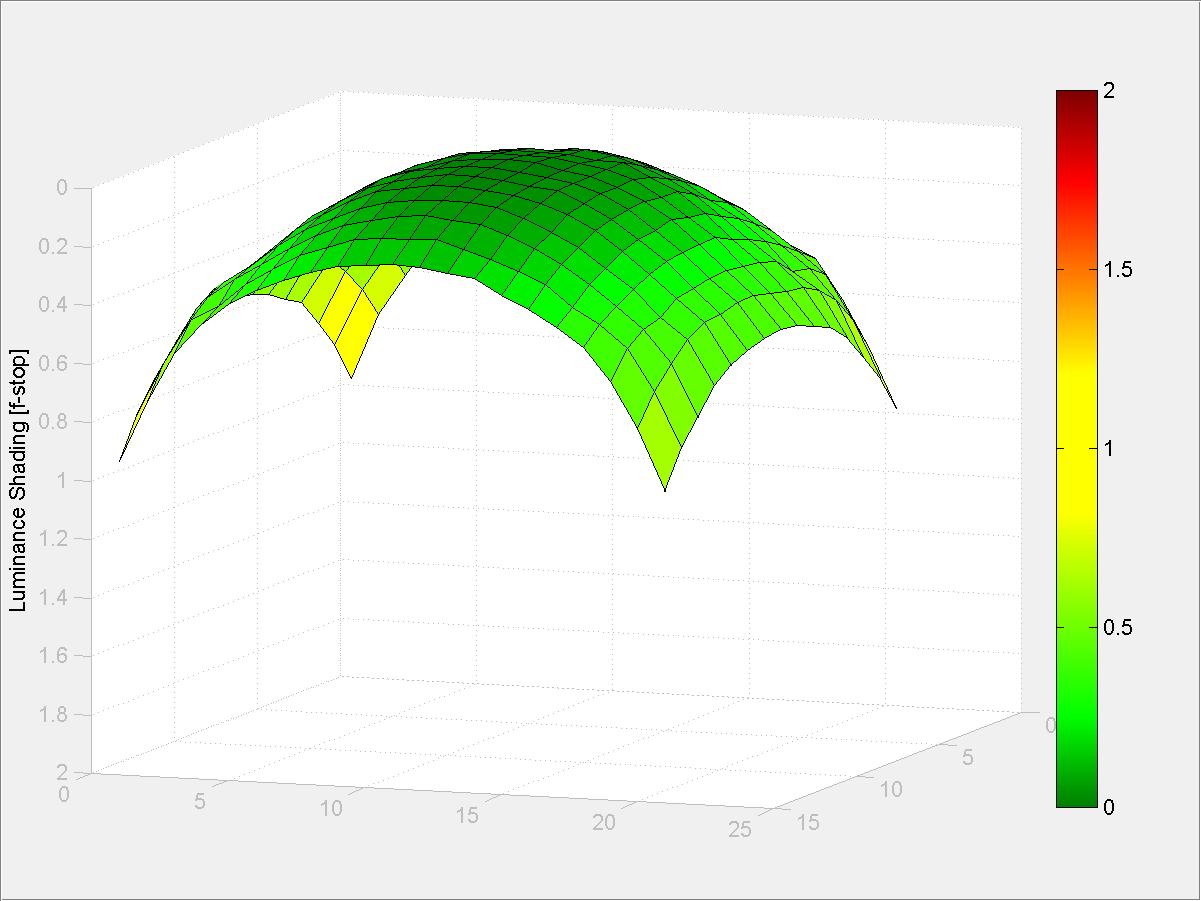
Nikkor Z 24-70mm f/2.8 S, 70mm @ f/2.8
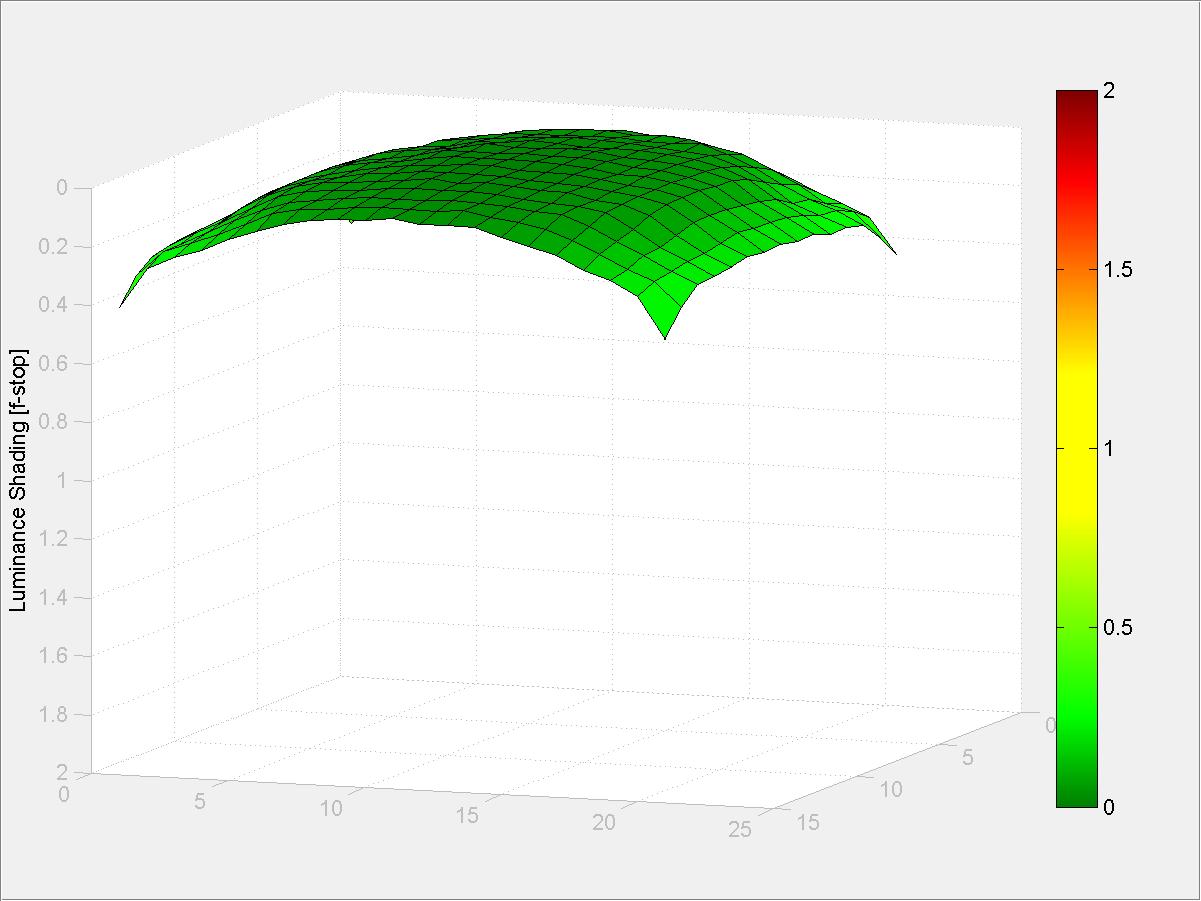
Nikkor Z 24-70mm f/2.8 S, 70mm @ f/4
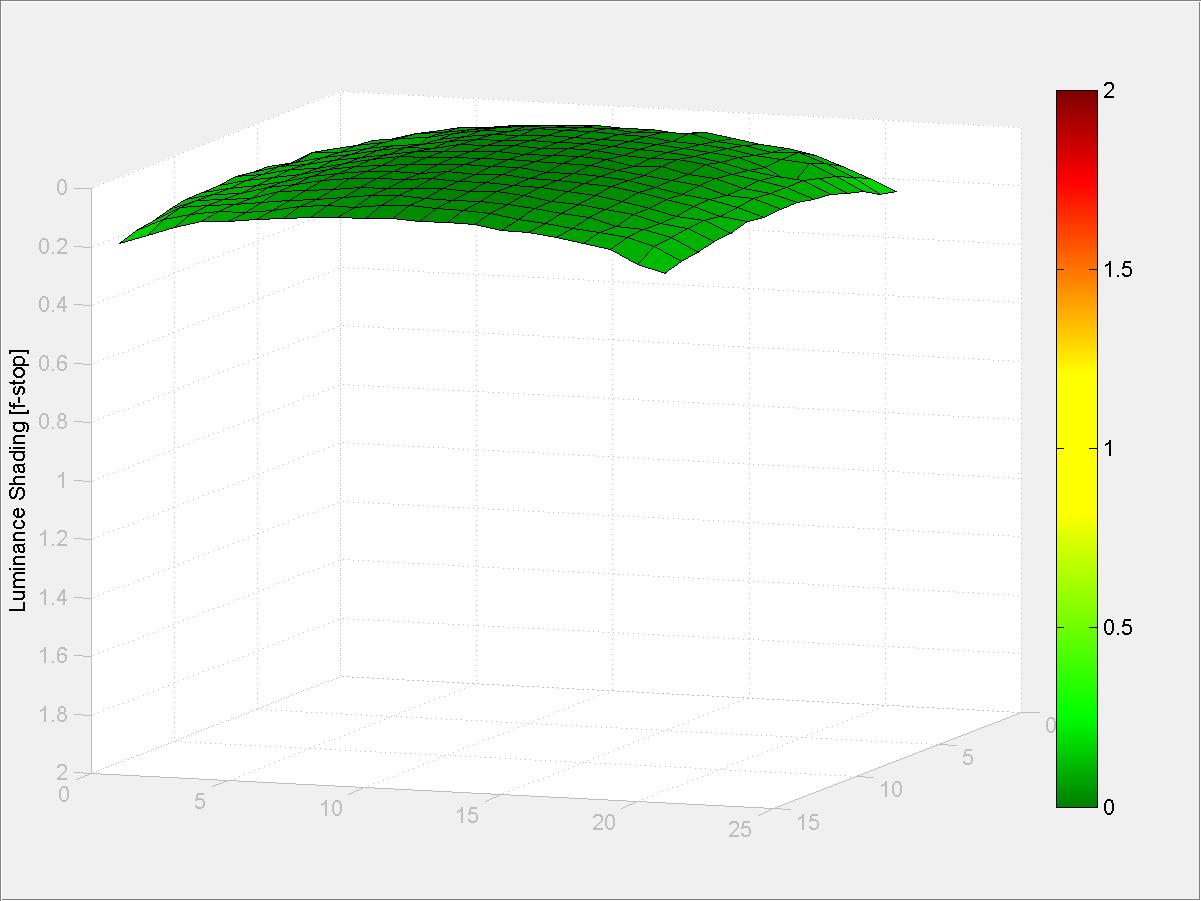
Nikkor Z 24-70mm f/2.8 S, 70mm @ f/5.6
Curvilinear distortion
Distortion is often an area where zoom lenses struggle, however with the embedded lens correction profile that’s automatically applied to raw files produced by the Nikon Z 7 and Z 6, users are provided with distortion-free results straight out of the camera that require no additional work. Users who shoot JPEGs will want to take advantage of the Auto distortion control option from their cameras menu system.
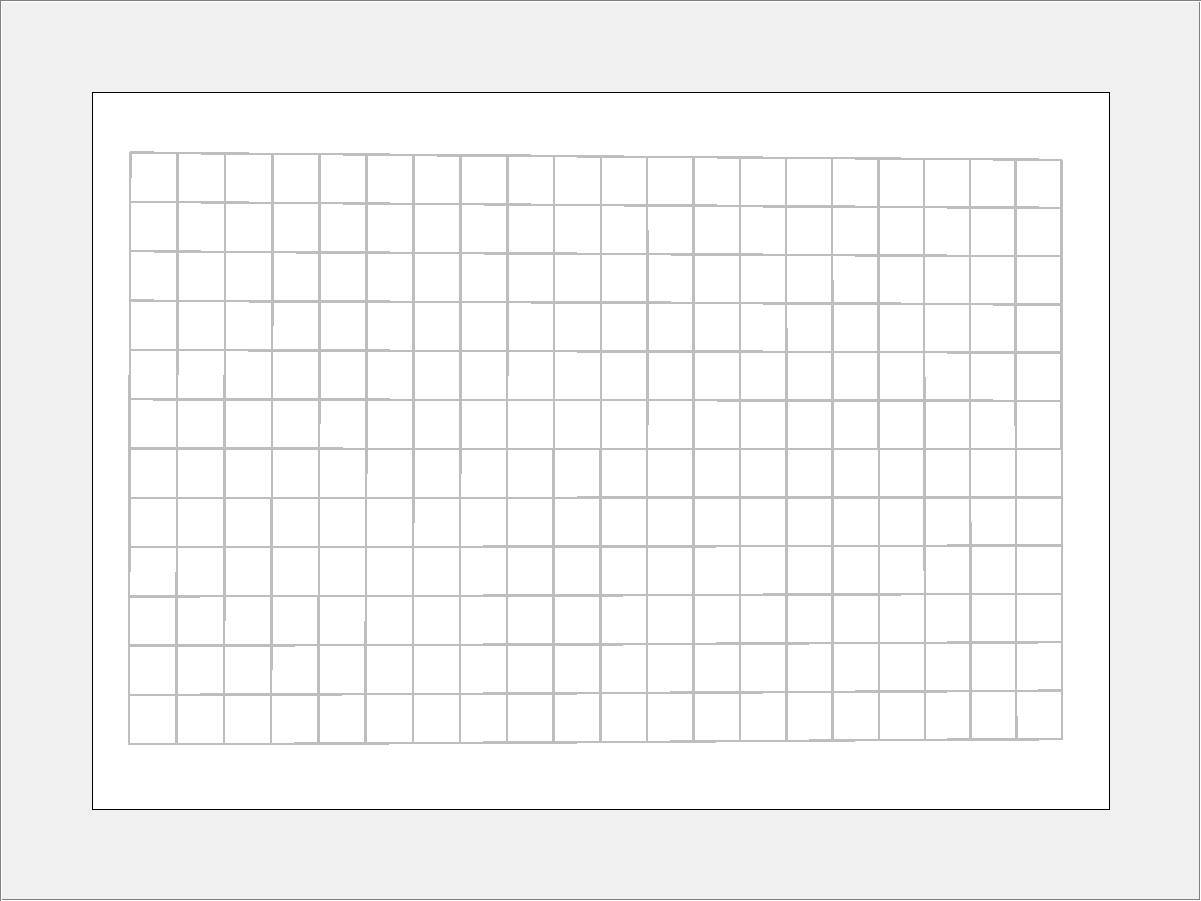
Nikkor Z 24-70mm f/2.8 S, 24mm, -0.1% TV SMIA (Raw image, embedded lens correction profile applied)
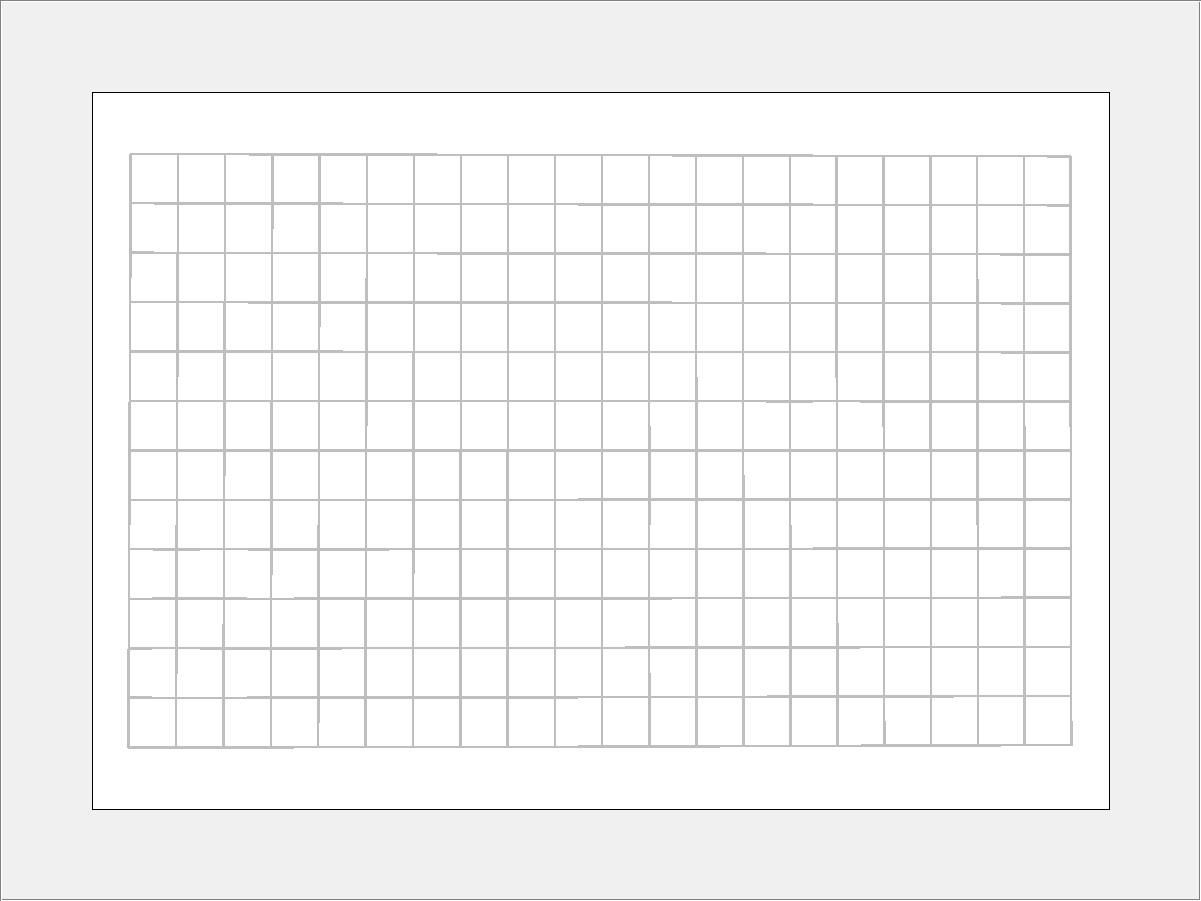
Nikkor Z 24-70mm f/2.8 S, 50mm, -0.1% TV SMIA (Raw image, embedded lens correction profile applied)
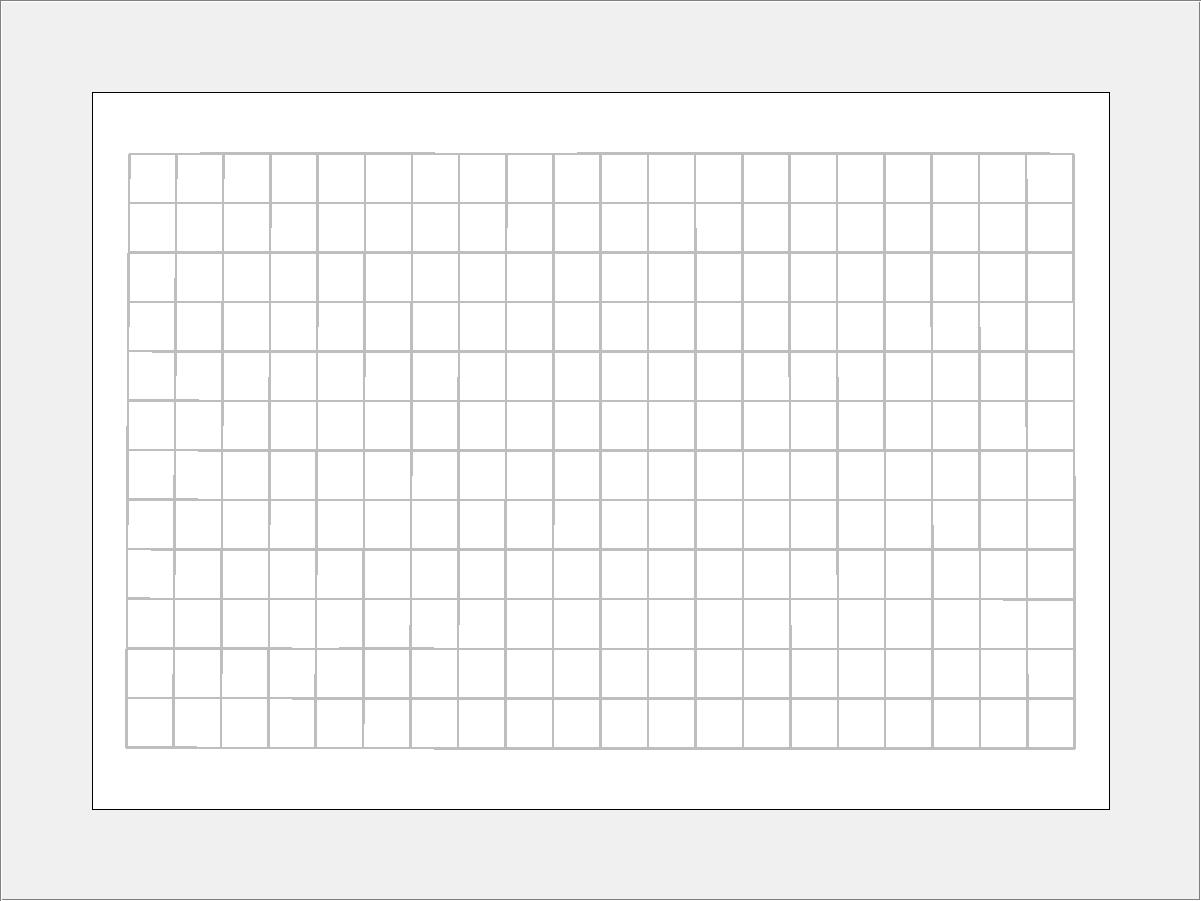
Nikkor Z 24-70mm f/2.8 S, 70mm, -0.1% TV SMIA (Raw image, embedded lens correction profile applied)
Nikkor Z 24-70mm f/2.8 S review: Verdict
It was only matter of time before Nikon released a new, fast standard zoom to compliment their excellent Z-mount cameras. While there’s nothing to stop Nikon users pairing older F-mount zooms like the Nikkor AF-S 24-70mm f/2.8 ED with the Nikon Z 7 and Z 6 via the FTZ adapter, coupling a heavy lens and adding a bulky adapter somewhat defeats the point of owning a smaller and lighter camera body. Choose to use a Nikon S-Line lens like the Z 24-70mm f/2.8 S and you’ll quickly appreciate the size and weight advantages it offers.
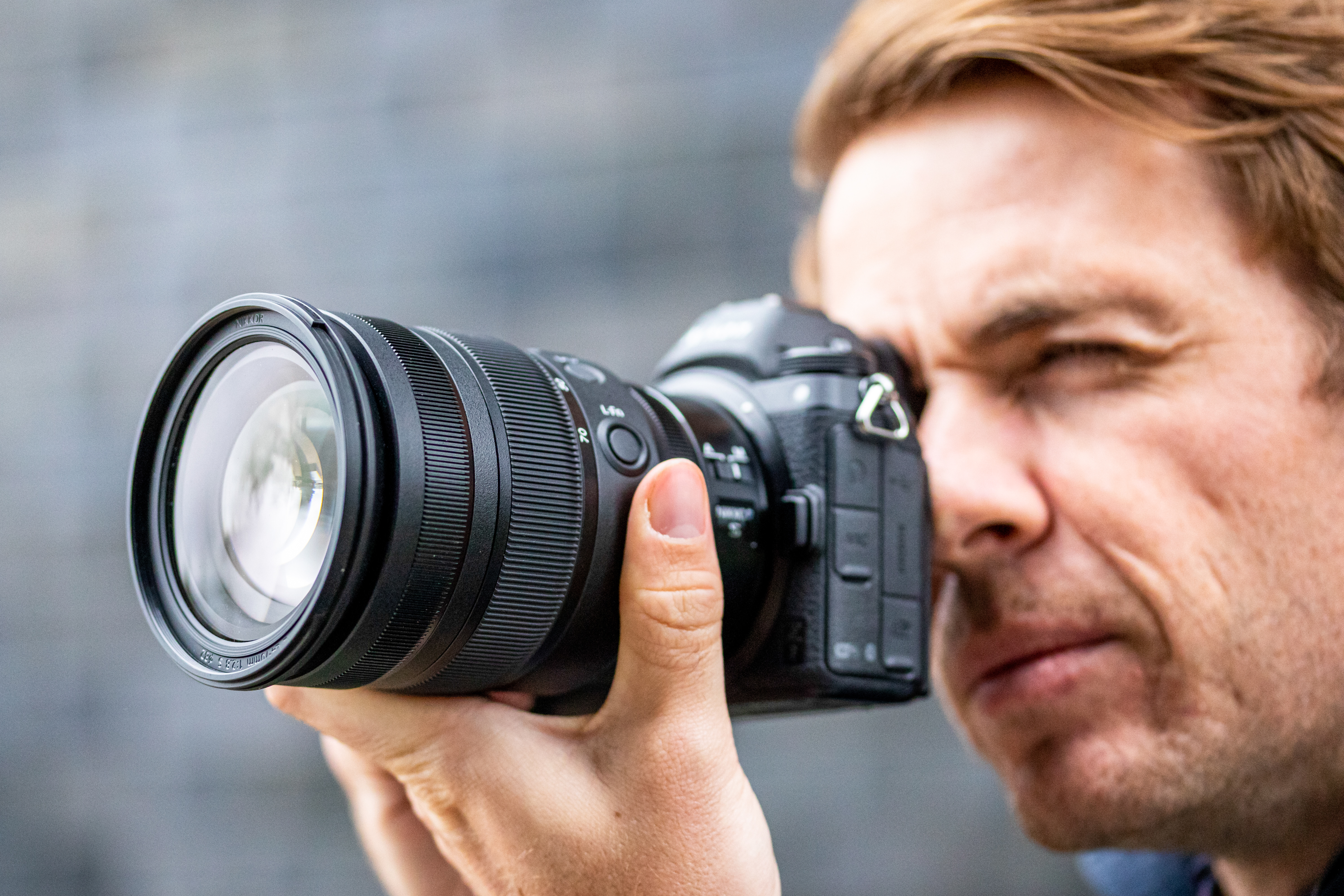
The L-Fn button on the barrel is within easy reach of the thumb when you support the lens.
Nikon’s lens engineers have produced a first-class zoom that’s very hard to fault. The combined weight of lens (805g) and Nikon Z 7 comes to 1,480g. This represents a big weight saving when you compare it to a setup like the Nikon D850 and Nikkor AF-S 24-70mm f/2.8E ED VR that weighs over 2kg. Better still, it’s lighter than both the Sony FE 24-70mm f/2.8 G Master (£1799) and Canon RF 24-70mm f/2.8 L IS USM (£2329) with no discernible disadvantages.
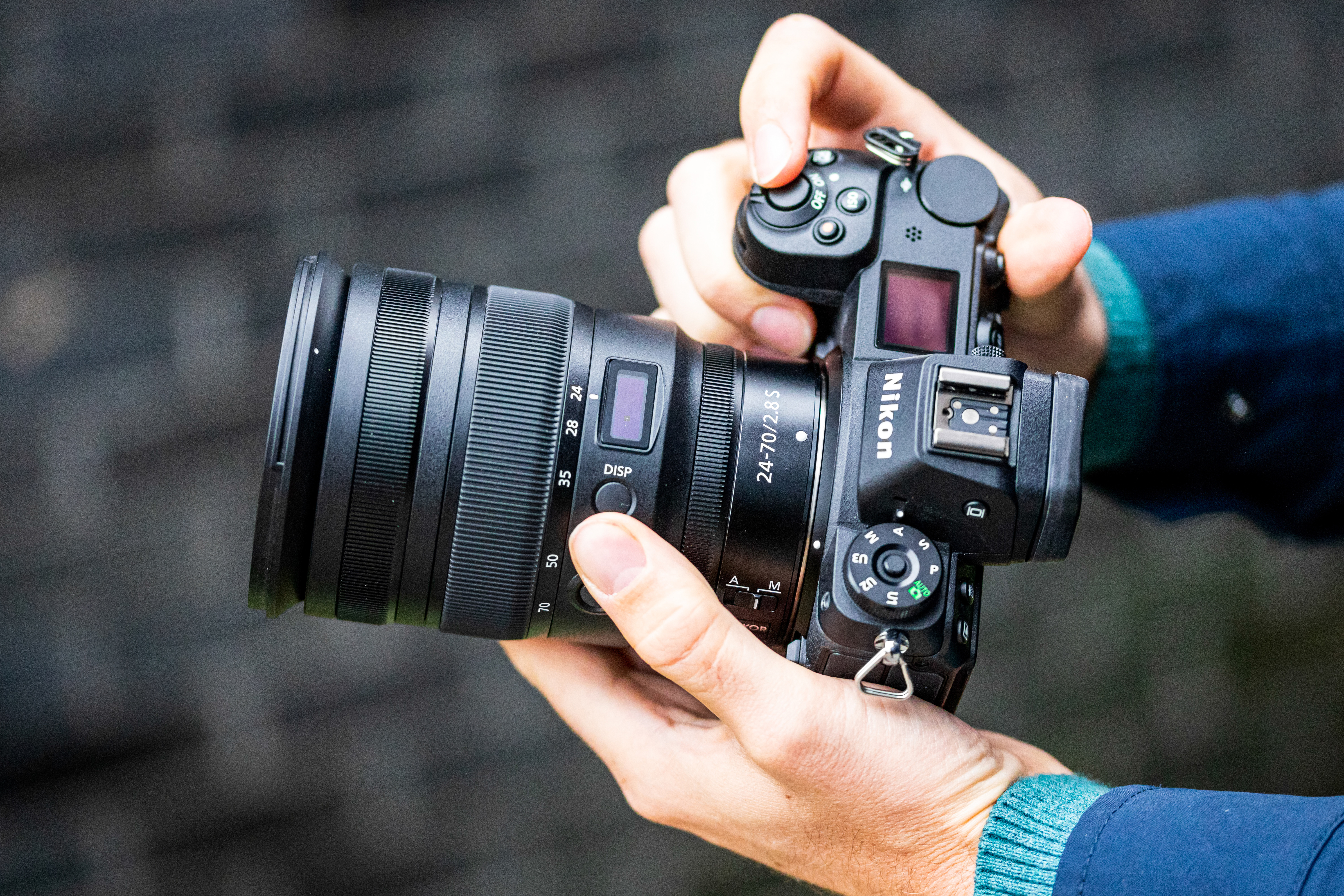
Nikon has got the look and feel of it’s premium S-Line standard zoom just right.
The Nikkor Z 24-70mm f/2.8 S a lens that produces outstanding sharpness and contrast, is built to endure the demands of professional use and balances beautifully on Nikon’s full-frame Z-series cameras. Advanced features like the control ring, L-Fn button and information panel are the icing on the cake. Although it’s far from cheap, it’s the best Z-mount zoom lens we’ve laid hands on and tested. It’s fully deserving of its AP Gold Award.
